Egypt is one of the most visited tourist destinations in the world. The cities of Cairo, Alexandria, Luxor, and Aswan all share significance in the development of early civilizations. Despite the history of these other cities, Cairo is the gateway to the past and is home to some of the most iconic images. From the Pyramids of Giza to the Sphinx and the mosque of Mohammad Ali, most visitors to Cairo consider this as their starting point for their vacation of a lifetime. If your Egypt vacation starts in Cairo, here are some outstanding things you need to see in Cairo.

Pyramids of Giza
The Pyramids of Giza are, by far, the most recognized symbols and iconic images of Egypt. Built during the reign of King Khufu (approximately 4500 years ago), the largest of the pyramids stands 479 feet (146m) tall and has a base of 754 feet (230 m) on each side. Built as a tomb for Khafre (Khufu’s son), the Pyramid of Khafre is the second largest pyramid. The third large pyramid is the Pyramid of Menkaure, built for Khafre’s son.
There has been some discussion about the length of time it took to complete these pyramids. It is agreed; however, that it was somewhere between 20 and 30 years. There are also some disagreements as to who built them. The Egyptians believe that the laborers were farmers who came to work on the pyramids during the non-planting and non-harvesting seasons of the calendar. They claim there are records of names, times, and wages written in the hieroglyphical archives. However, the Jewish people claim that enslaved people constructed the pyramids according to their stories. Which is true? Who knows?
Presently, visiting the pyramids involves driving to the site, paying the entrance fee of 200 LE (Egyptian Pound), and exploring these vast structures. If you are adventurous, you can pay the extra 300 LE and venture inside the Pyramid of Khufu. The path inside is narrow and steep, and you will be crouching the entire time. Once inside the tomb, there is not much there other than the sensation of being inside a 4500-year-old tomb.
On the outside of the pyramids, you can walk around and truly appreciate the incredible size of these tombs and the level of effort it took to construct them. Whether you choose to step inside or just walk the perimeter, the Pyramids of Giza are a must in Cairo.
You should be aware that there are plenty of local hustlers trying to peddle their wares. It is best to just ignore them and keep walking.
Camel Ride at the Pyramids
Experiencing a camel ride with the pyramids as your backdrop is the most incredible feeling. To do so creates a proper understanding of the immense power of these significant structures, and promenading using traditional methods (camel), gives more credibility to the experience.
From the moment you meet the beast, hold on for dear life as it arises from the ground and is led by a local guide; you will encounter a world of emotions. This is the same mode of transportation that existed 4500-5000 years ago! You have now entered an alternate reality that can be somewhat overwhelming. if you feel adventurous, trying riding in the traditional method by crossing your leg across and anchoring it with the horn of the saddle. Otherwise, just ride straddle it and ride like a horse.
Your guide will take you on a short desert trek closer to the pyramids to take incredible photos of you, the camel, and the pyramids! Don’t forget your camera for this experience of a lifetime!
Sphynx
Since you are already on the Giza plateau, visiting the Sphynx is a must! This 4500-year-old limestone statue measures 240 feet (73 meters) long and 66 feet (20 meters) high and is one of the world’s most prominent monuments, and it is also one of the most recognizable images of Egypt.
In ancient Egyptian culture, the sphynx (a creature with the body of a lion and the head of a human) represented a spiritual guardian for important tomb and temple complexes. Most sphinxes are depicted as male monuments with a pharaoh headdress, such as the Great Sphynx in Giza, but female pharaohs, including Hatshepsut, were also represented. In Giza, it is believed that this Great Sphynx was constructed to protect the tombs of Khufu, Khafre, and Menkaure, which were entombed in the pyramids.
Over the millennia, this colossal monument gradually became buried in sand up to the shoulders. In the early 1800s, a Genoese adventurer named Capt. Giovanni Battista Caviglia started a quest to investigate what lay below. Over the last two centuries, excavations have been ongoing to uncover and restore this incredible monument. As one of the major attractions in Cairo, the sphynx can make an astonishing photo if taken in the right direction with the pyramids in the background.
Egyptian Museum Cairo
Although older and showing its age, the Egyptian Museum in Cairo is home to an extensive collection of ancient Egyptian antiquities. There is an air of awe in the museum as you explore two floors filled with artifacts, statues, tools, sarcophagi, and mummies. A guided tour is the best way to appreciate all the history and significance of the artifacts.
There is an extensive collection of large-scale works in stone on the ground floor, including several statues. The displays are arranged in chronological order clockwise, from the pre-dynastic to the Greco-Roman period. There is also an enormous collection of wooden sarcophagi. Many other artifacts on the first floor include smaller works such as papyri, coins, and textiles.
There are artifacts from the last two dynasties on the first floor, including items from the tombs of the Pharaohs such as Thutmosis III, Thutmosis IV, Amenophis II, and Hatshepsut. Also on this level are many artifacts from the Valley of the Kings, including one of the most recognized Tutankhamun. King Tut, as he was called, had his special anteroom showcasing his artifacts . (Be aware that photography is not permitted in this room).
Although this is an incredible museum and worth spending a few hours here, the museum is in the process of being moved to the Grand Egyptian Museum at Giza. Be sure to check their website for opening and closing dates.
Papyrus Museum
The Papyrus Museum is more of a store than a museum, but it should be included in the things to see in Cairo. In this museum, you will learn the history of storytelling as painted on papyrus. A demonstration is provided on how papyrus is made and how to determine the real papyrus vs. a cheap knock-off sold in souvenir shops.
The staff within the museum are extremely helpful in relaying the painted stories on the papyrus. Papyri are available for sale in four different sizes for displaying on walls, and some are available to customize with your name using hieroglyphics.
Although this museum is fascinating, be aware that the staff will encourage you to purchase products once the demonstration has finished. If you decide to purchase, haggling on the price is customary, and you should also verify that the agreed price with the salesman is the same as the price being rang in at the cash.
Khan el Khalili
Khan el Khalili is one of Egypt’s most famous souks or markets. It is established in the center of Cairo and is home to many Egyptian artisans and workshops involved in producing traditional crafts and souvenirs. The name Khan el-Khalili historically referred to a single building in the area; today, it relates to the entire shopping district.
Within this district, you will find different goods, cafes, restaurants, and clothes shops. Tourists and locals alike frequent these markets, making this area very crowded.
Here, specific items worth purchasing include gold artifacts and antiques, stained glass lamps, handmade accessories, and numerous pharaonic souvenirs.
For the ladies, this is one of the places where you will want to be more modestly dressed to show respect for the Muslim culture and to alleviate some of the catcalls commonly experienced.
Coptic Cairo
Coptic Cairo is one of the outstanding areas you must see in this sprawling city. Located in the oldest part of Old Cairo, Coptic Cairo dates back to around 395-408 AD, when many churches were built. In the 6th century BC, the Persians built a fortress called Babylon. As Christianity grew, this fortress later supported the “Hanging Church,” which was built atop its gatehouse in the third century AD. It is believed that this church was the official residence of the Coptic Pope in 1047.
In the same vicinity is St. Georges Church, the Greek Orthodox church built on the northern tower of the Babylon Fortress. Its impressive dome and gorgeous interior distinguish St. Georges.
Other churches also found in Coptic Cairo include The Saints Sergius and Bacchus Church (Abu Serga), St. Barbara Church, and St. Mercurius Church. If religious history intrigues you, then visiting Coptic Cairo is a must. Be sure to dress appropriately, men as well as ladies.
Mosque of Muhammad Ali
As Coptic Cairo is important to the Christian Community, the Mosque of Mohammad Ali is just as important to the Islamic community. This mosque is in the Citadel of Cairo and was commissioned by Muhammad Ali Pasha. It was built between 1830 and 1848. Muhammad Ali Pasha was known as the “Father of Modern Egypt,” and many of his achievements form the basis of Egypt today.
The mosque is fascinating to view with its dome structure and surrounding minarets. Sitting majestically on the summit, this mosque is perhaps one of the most visited in Egypt. Inside, the décor is impressive with cut crystal, gilt-covered surfaces, and more than 136 stained glass windows in the domes.
Saqqara Pyramid
Although technically outside the city, the Saqqara Pyramid is a must-see in the Cairo area. It is believed the Saqqara Pyramid, or “Step Pyramid’ is the FIRST pyramid built, not their more famous counterparts on the Giza plateau. The Saqqara step pyramid is located northwest of the city of Memphis, Egypt, and was built 4700 years ago. It was an astonishing monument built for King Djoser, who ruled Upper and Lower Egypt from 2687 BC to 2668 BC.
This magnificent tomb consists of six steps, is 60m high, and covers 15 hectares. It took about 20 years to build and another ten years to connect it to underground tunnels. Underground, there are approximately 5.7 kilometers of tunnels connecting a labyrinth of rooms and chambers. This is significant since Egyptologists have not found this degree of the subterranean world below any other pyramids.
As this pyramid is outside Cairo’s city limits, it does tend to be a little less crowded. A short distance away is the city of Memphis, the first capital in Egypt, built-in 3150 BC.
Final Thoughts
Whether Cairo is your destination or just a launching point for an epic adventure, you will soon discover there are many outstanding things to see. From the awe-inspiring pyramids to the historical churches and mosques, Cairo will leave an impression you will not soon forget.
As mentioned in my related article, How to Plan Your First Trip To Egypt, most tourist attractions should be visited with a guide or a registered tour for security reasons. Get Your Guide offers a great selection of tours in Cairo and the surrounding areas.
Here are some of their best tours :
The Museum of Egyptian Civilization, Citadel & Old Cairo Tour will take you through the Egyptian Museum, Mosque of Mohammad Ali, Khan El-Khalili Bazaar, and Coptic Cairo.
For Saqqara, the Saqqara & Dahshur Pyramids with Memphis Trip is an excellent option for a day trip.
If you are travelling on to Luxor to start your Nile cruise Itinerary, be sure to check out my post on the Luxor balloon Flight.
For other travel tips, check out this post: Top 8 Egypt Travel Tips You Need To Know.
If there is something I have missed, please leave a comment.
Free Subscribers:
If you are looking for Egypt trip planning checklists and trackers, I have these available through my online store.
Paid Subscribers:
These products are FREE on my Digital Products Page.



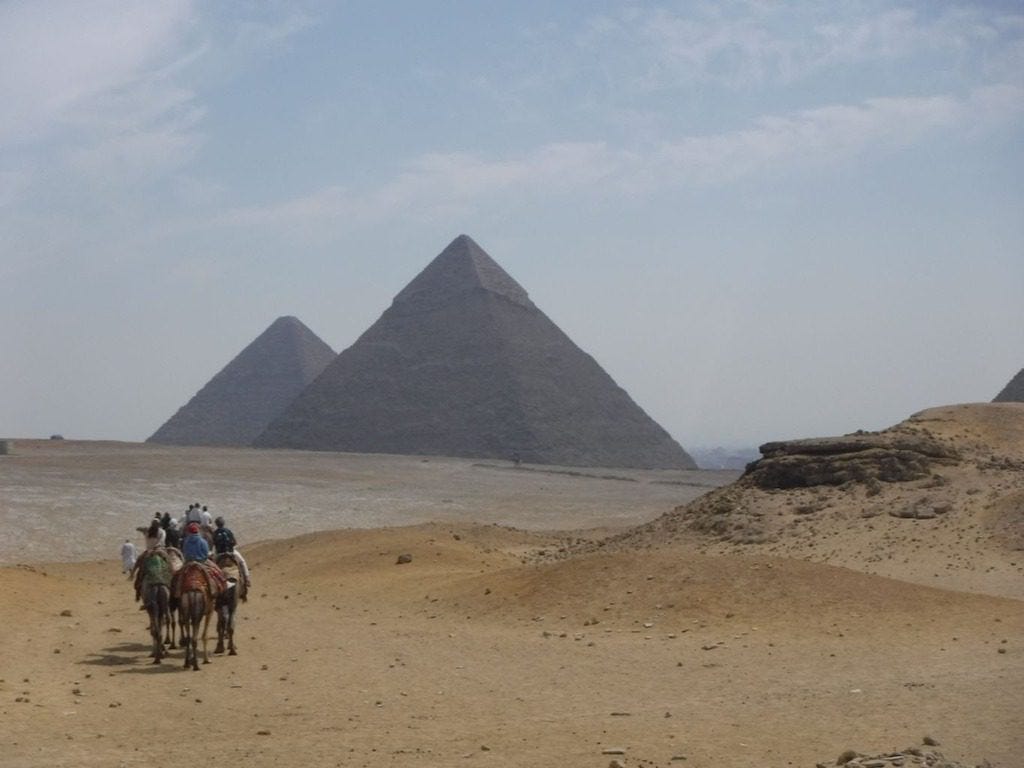
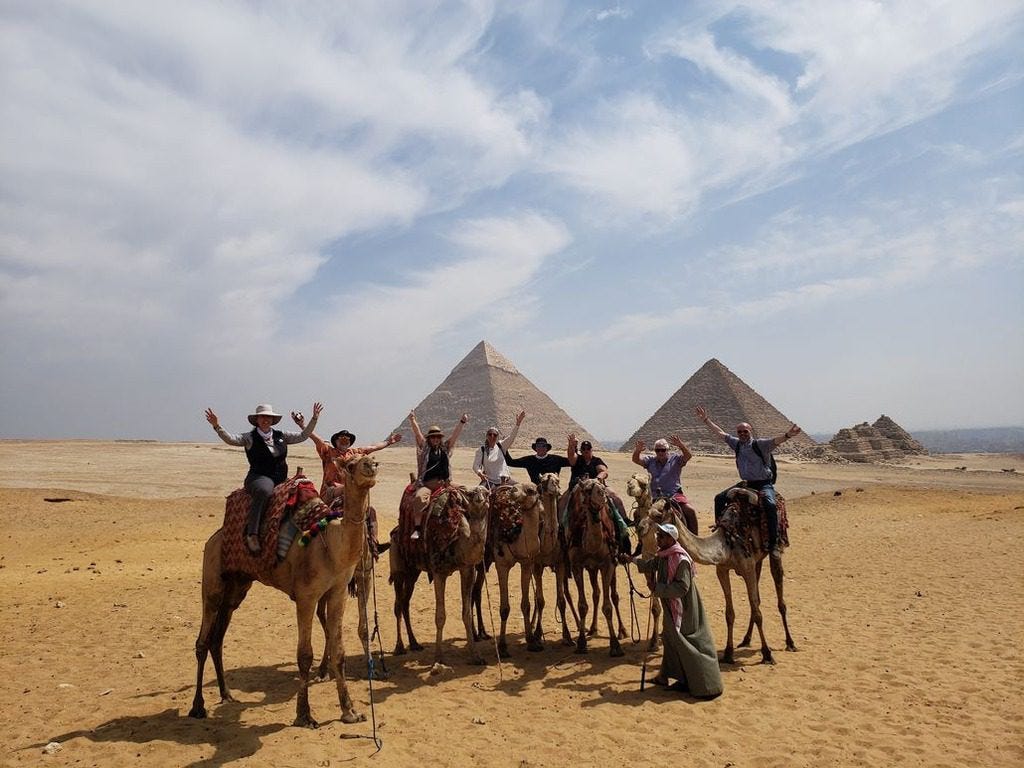

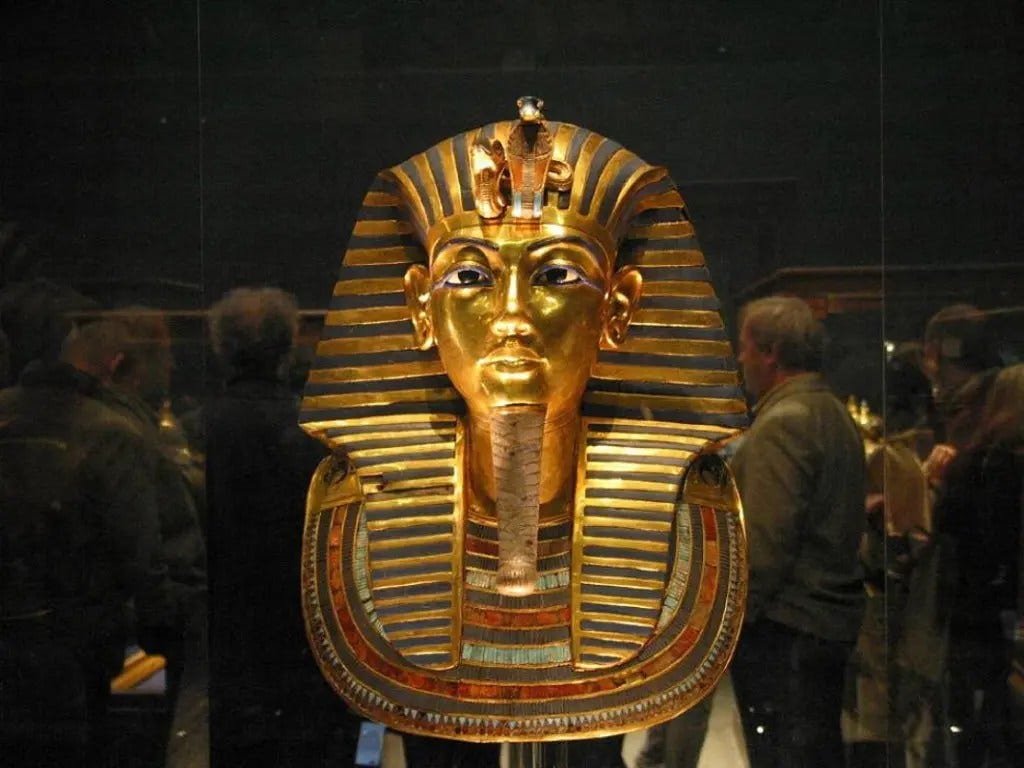
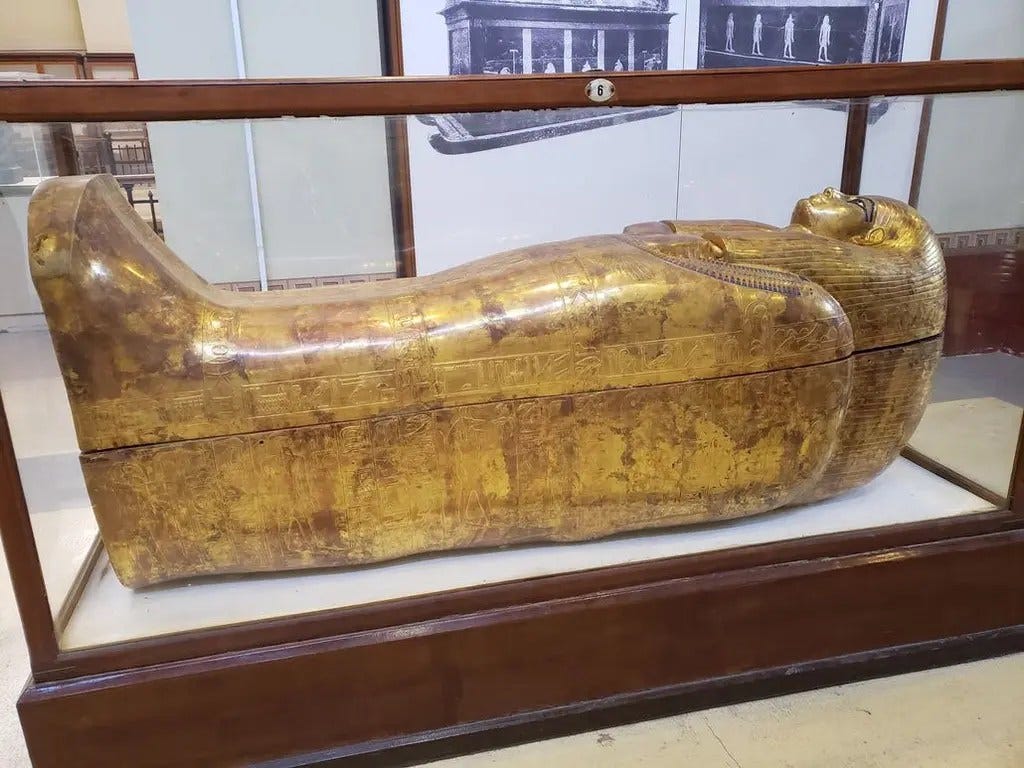



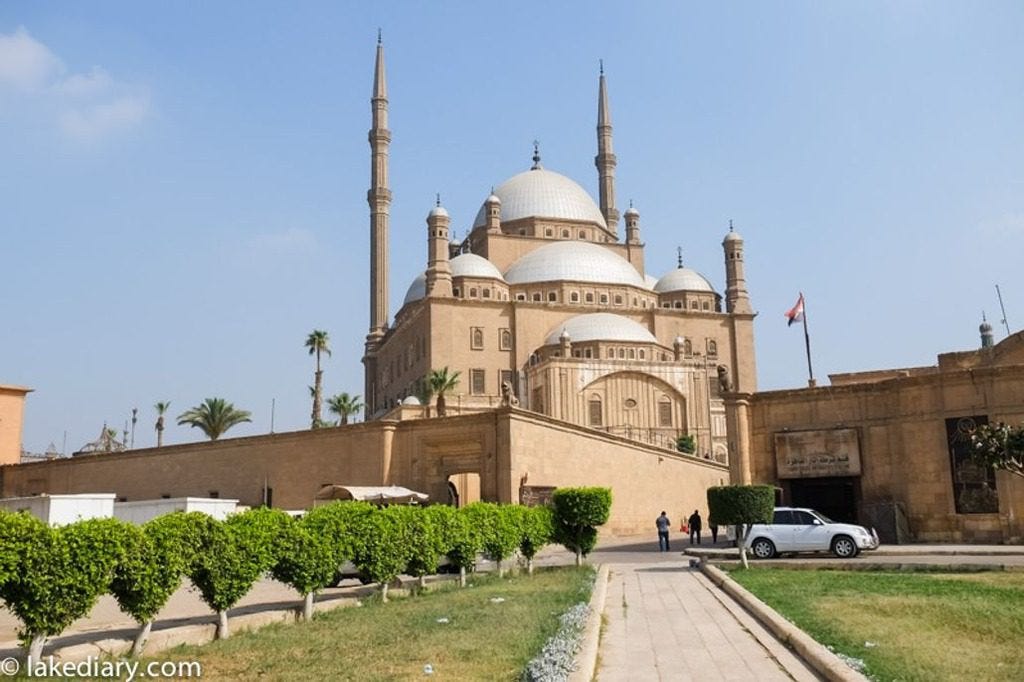


A terrific and succinct guide to Cairo. Beautiful photos of some of the pyramids and riding on a camel to see the pyramids has to be an exhilarating experience. I like that you mentioned some of the more "off the beaten path" pyramids as i'm sure there's a sea of tourists from all over the world visiting at any given time.
I would love to go to Cairo one day, but at the moment I am a bit hesitant as travelling solo there as a woman would make me feel uncomfortable. The blue skies and golden sand landscapes are my perfect environment. I would totally use the opportunity and go on a tour inside the pyramids. You can also sign me up for the camel ride and the new museum GEM, I have kept my eyes open for its grand opening since 2022! I hope it will happen as scheduled later this summer, fingers crossed.
Carolin | <a href="https://solotravelstory.com/">Solo Travel Story</a>